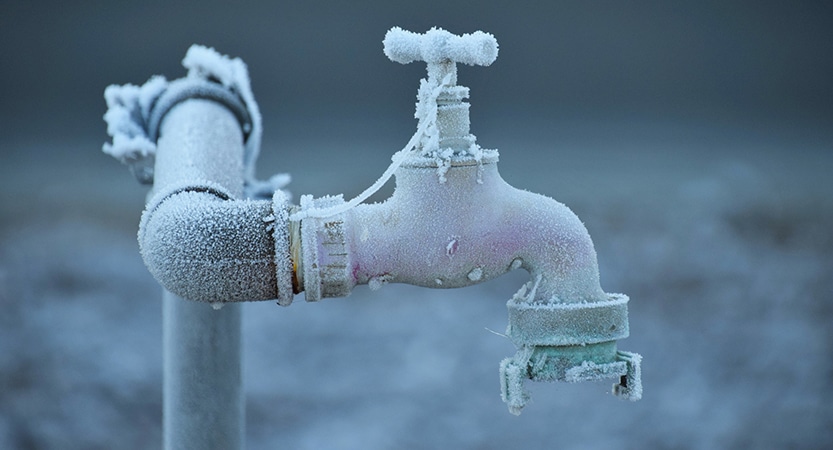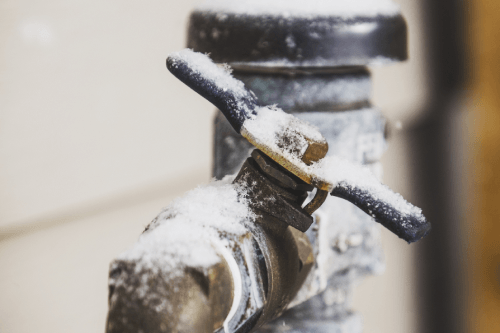Tips to Protect Pipes from Cold Weather: Expert Advice
Tips to Protect Pipes from Cold Weather: Expert Advice
Blog Article
What are your concepts on How To Avoid Freezing Pipes?

Winter can wreak havoc on your plumbing, specifically by freezing pipelines. Right here's just how to prevent it from taking place and what to do if it does.
Introduction
As temperatures drop, the danger of frozen pipes increases, possibly resulting in pricey repairs and water damages. Comprehending just how to avoid frozen pipelines is vital for homeowners in chilly environments.
Prevention Tips
Insulating vulnerable pipelines
Cover pipes in insulation sleeves or make use of warm tape to shield them from freezing temperature levels. Focus on pipes in unheated or external areas of the home.
Heating strategies
Maintain indoor areas sufficiently warmed, especially areas with plumbing. Open cupboard doors to permit warm air to flow around pipelines under sinks.
Exactly how to identify frozen pipelines
Seek lowered water circulation from taps, uncommon odors or noises from pipelines, and visible frost on exposed pipelines.
Long-Term Solutions
Architectural adjustments
Consider rerouting pipelines away from exterior walls or unheated areas. Include additional insulation to attic rooms, cellars, and crawl spaces.
Updating insulation
Purchase high-quality insulation for pipelines, attic rooms, and walls. Correct insulation helps preserve consistent temperatures and lowers the threat of frozen pipelines.
Protecting Outdoor Plumbing
Garden tubes and exterior taps
Separate and drain pipes garden tubes before wintertime. Set up frost-proof faucets or cover outside taps with protected caps.
Understanding Icy Pipes
What causes pipelines to ice up?
Pipes ice up when exposed to temperatures listed below 32 ° F (0 ° C) for expanded durations. As water inside the pipelines ices up, it broadens, putting pressure on the pipe walls and potentially triggering them to break.
Dangers and damages
Frozen pipes can lead to water system disruptions, property damages, and pricey repair services. Ruptured pipelines can flooding homes and cause substantial structural damage.
Indicators of Frozen Piping
Recognizing frozen pipes early can prevent them from bursting.
What to Do If Your Pipelines Freeze
Immediate activities to take
If you presume frozen pipelines, maintain taps open to eliminate pressure as the ice thaws. Utilize a hairdryer or towels soaked in warm water to thaw pipes gradually.
Conclusion
Stopping icy pipelines calls for positive measures and fast feedbacks. By understanding the causes, indicators, and preventive measures, homeowners can secure their plumbing during winter.
5 Ways to Prevent Frozen Pipes
Drain Outdoor Faucets and Disconnect Hoses
First, close the shut-off valve that controls the flow of water in the pipe to your outdoor faucet. Then, head outside to disconnect and drain your hose and open the outdoor faucet to allow the water to completely drain out of the line. Turn off the faucet when done. Finally, head back to the shut-off valve and drain the remaining water inside the pipe into a bucket or container. Additionally, if you have a home irrigation system, you should consider hiring an expert to clear the system of water each year.
Insulate Pipes
One of the best and most cost-effective methods for preventing frozen water pipes is to wrap your pipes with insulation. This is especially important for areas in your home that aren’t exposed to heat, such as an attic. We suggest using foam sleeves, which can typically be found at your local hardware store.
Keep Heat Running at 65
Your pipes are located inside your walls, and the temperature there is much colder than the rest of the house. To prevent your pipes from freezing, The Insurance Information Institute suggests that you keep your home heated to at least 65 degrees, even when traveling. You may want to invest in smart devices that can keep an eye on the temperature in your home while you’re away.
Leave Water Dripping
Moving water — even a small trickle — can prevent ice from forming inside your pipes. When freezing temps are imminent, start a drip of water from all faucets that serve exposed pipes. Leaving a few faucets running will also help relieve pressure inside the pipes and help prevent a rupture if the water inside freezes.
Open Cupboard Doors
Warm your kitchen and bathroom pipes by opening cupboards and vanities. You should also leave your interior doors ajar to help warm air circulate evenly throughout your home.

As a passionate person who reads about How To Avoid Freezing Pipes, I imagined sharing that topic was sensible. Enjoyed our write up? Please share it. Let another person discover it. Thanks a lot for being here. Revisit us soon.
Order Repair Report this page